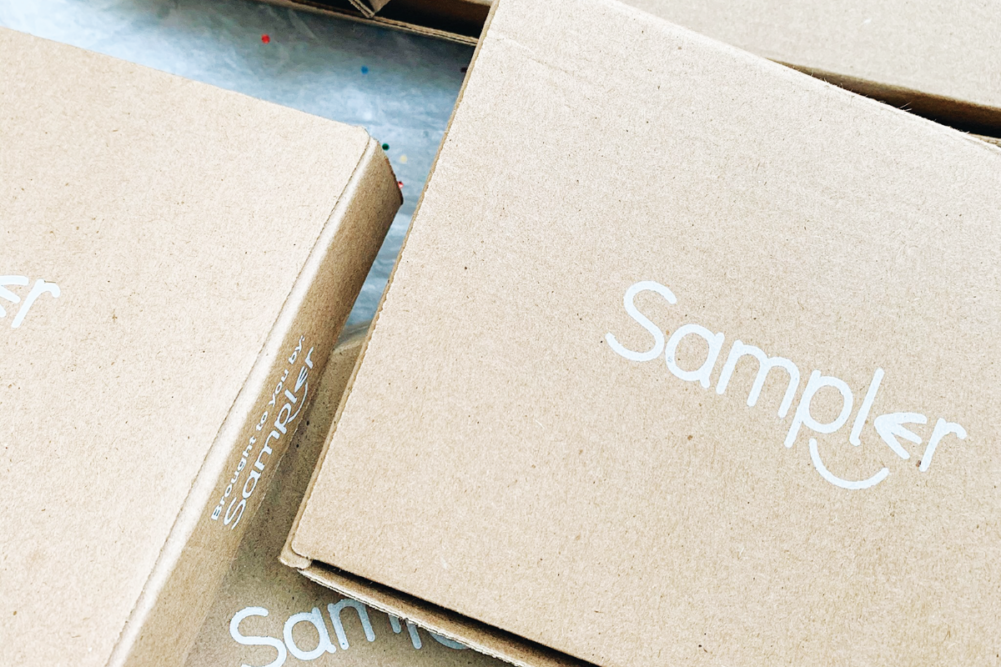 KANSAS CITY — Entrepreneurs have awaited the return of in-store sampling, long regarded as a valuable tool for driving brand awareness and reaching new consumers. But over the past year as the pandemic stemmed such interactions, alternative solutions emerged that may provide more effective opportunities for gaining visibility in a crowded marketplace.
KANSAS CITY — Entrepreneurs have awaited the return of in-store sampling, long regarded as a valuable tool for driving brand awareness and reaching new consumers. But over the past year as the pandemic stemmed such interactions, alternative solutions emerged that may provide more effective opportunities for gaining visibility in a crowded marketplace.
Conversations with startup founders last year revealed a collective dismay over the cancellation of in-person demonstrations. A study conducted several years ago by Brigham Young University Marriott School of Business determined sampling has both an immediate and sustained impact on generating sales and may benefit not just a brand but an entire category. A free taste removes the risk of purchasing an unfamiliar product, helps establish a personal connection and elevates the shopping experience. In addition to marketing new products, early-stage brands may collect useful feedback on product quality and packaging.
As more grocery shopping shifted online last year, brands began exploring digital means of discovery. Sampler, a Toronto-based venture-backed technology company, distributes free product samples to individuals based on specific preferences, behaviors and geographies. Marie Chevrier Schwartz, founder and chief executive officer, saw an increase in companies experimenting with digital sampling through the platform during the pandemic, tapping into a targeted swath of its 50 million users across North America.
“If you only have 5,000 chocolate bars to give, you want to give those 5,000 chocolate bars to the most valuable consumers out there,” she said.
Digital sampling enables continued communications to build loyalty and convert tryers to buyers, Ms. Chevrier Schwartz said. Looking ahead, she expects some brands will adopt a blended approach, noting “both traditional and digital product sampling have their strengths.”
When launching a new product line during the initial lockdown period, the team at Pipcorn “pivoted from a marketing perspective and figured out ways to demo, but digitally,” said co-founder Teresa Tsou. The brand partnered with Ibotta, a rewards program that provides cash incentives to shoppers.
As more grocery shopping shifted online last year, brands began exploring digital means of discovery.
“Ibotta has been a really great partner to get trial on our products,” Ms. Tsou said. “We offered a discount or even a sample, and we’ve seen a really high return rate using that avenue as a demo.”
The founders of Fabalish, a brand of plant-based dips, found success in collaborating with online influencers to target specific communities aligned with the products.
“The first four months of the pandemic, we were just doing social media and targeting influencers who were either foodies, vegans or somehow aligned to our product but most importantly would make something with the food, not just take a picture and put a story up,” co-founder Paul Majcherczyk said. “I think when they’re creating something with it and showing people how to eat it, that’s what gets people excited and what drove a lot of traffic to our website.”
Prior to the pandemic, Gr8nola founder Erica Liu Williams relied on corporate foodservice to get her low-sugar granola in the hands and mouths of employees at Google, Twitter, Facebook and other firms across Silicon Valley. When offices shuttered last spring, she turned to online grocery delivery companies like Misfits Market and Sun Basket to expand her brand’s reach.
“The food salvaging ones like Imperfect Foods and Misfits, your product is going to be at a discount, which isn’t ideal to have yearlong, but it’s definitely a good way to drive trial,” she said. “I think the consumer is very mission-based about sustainability, so they are potentially the right customers.”
Reaching the right consumer is a powerful benefit of digital product sampling in its various forms. Tracking is another. Both are difficult to accomplish within the walls of a grocery store.





